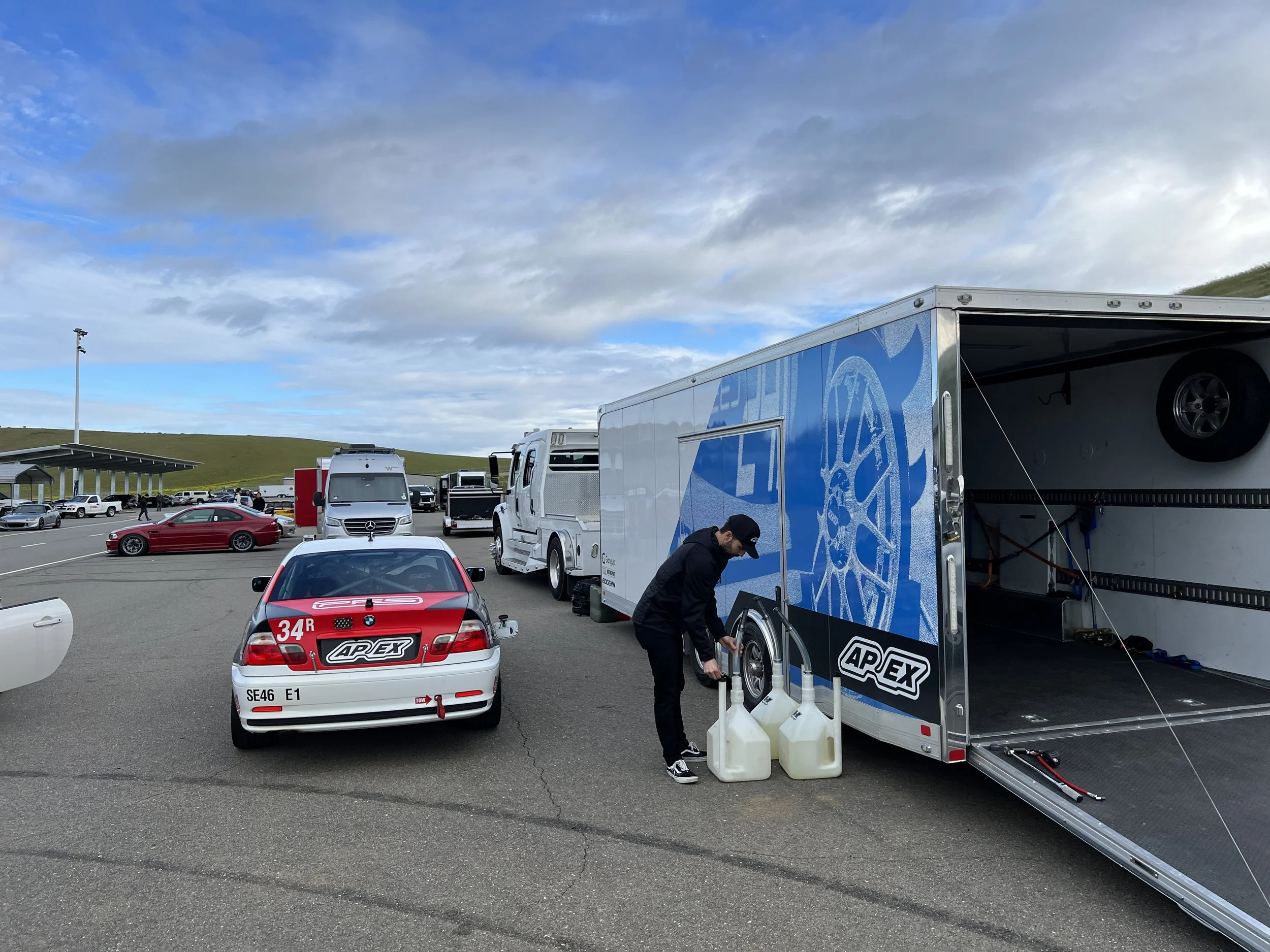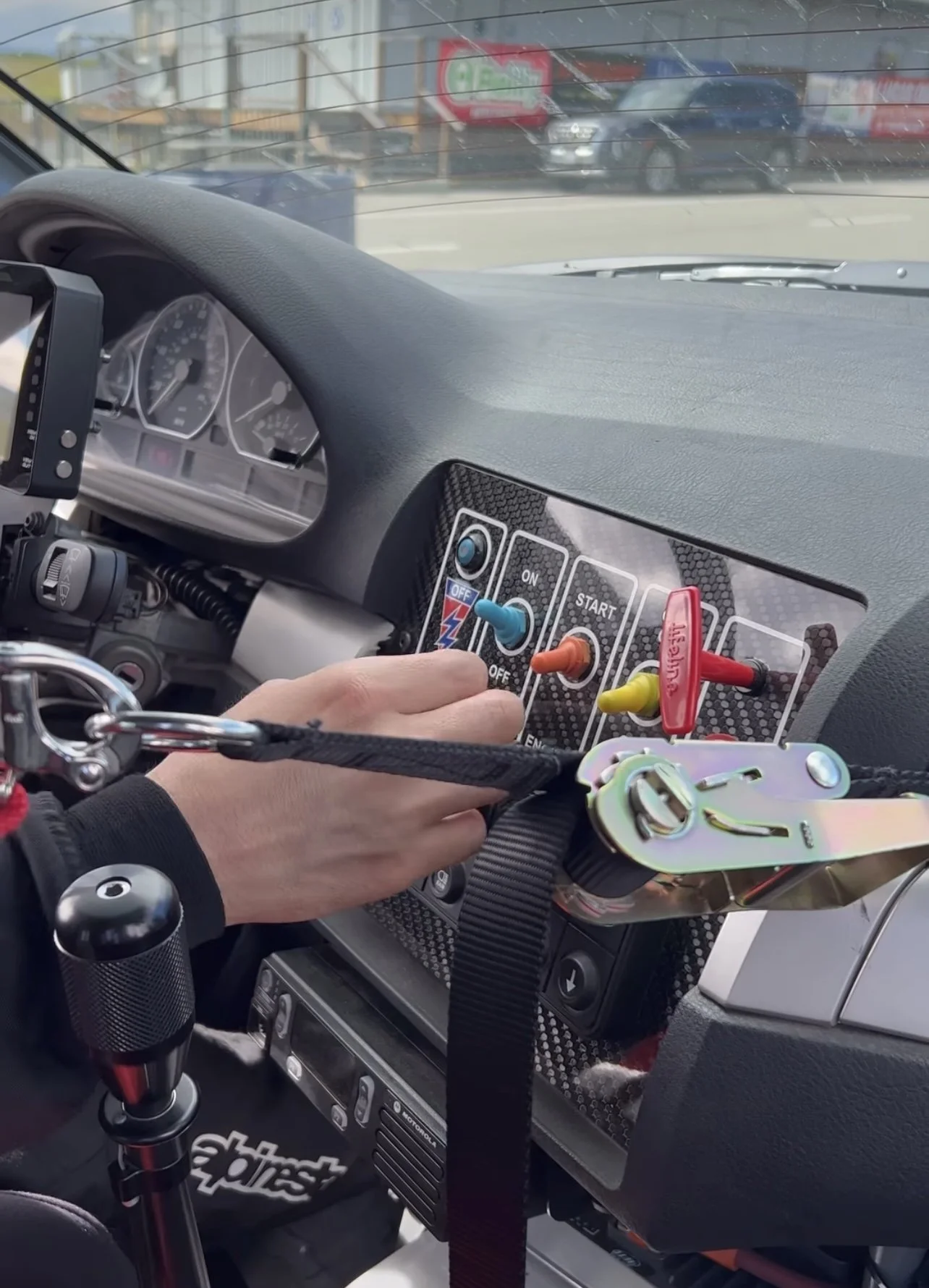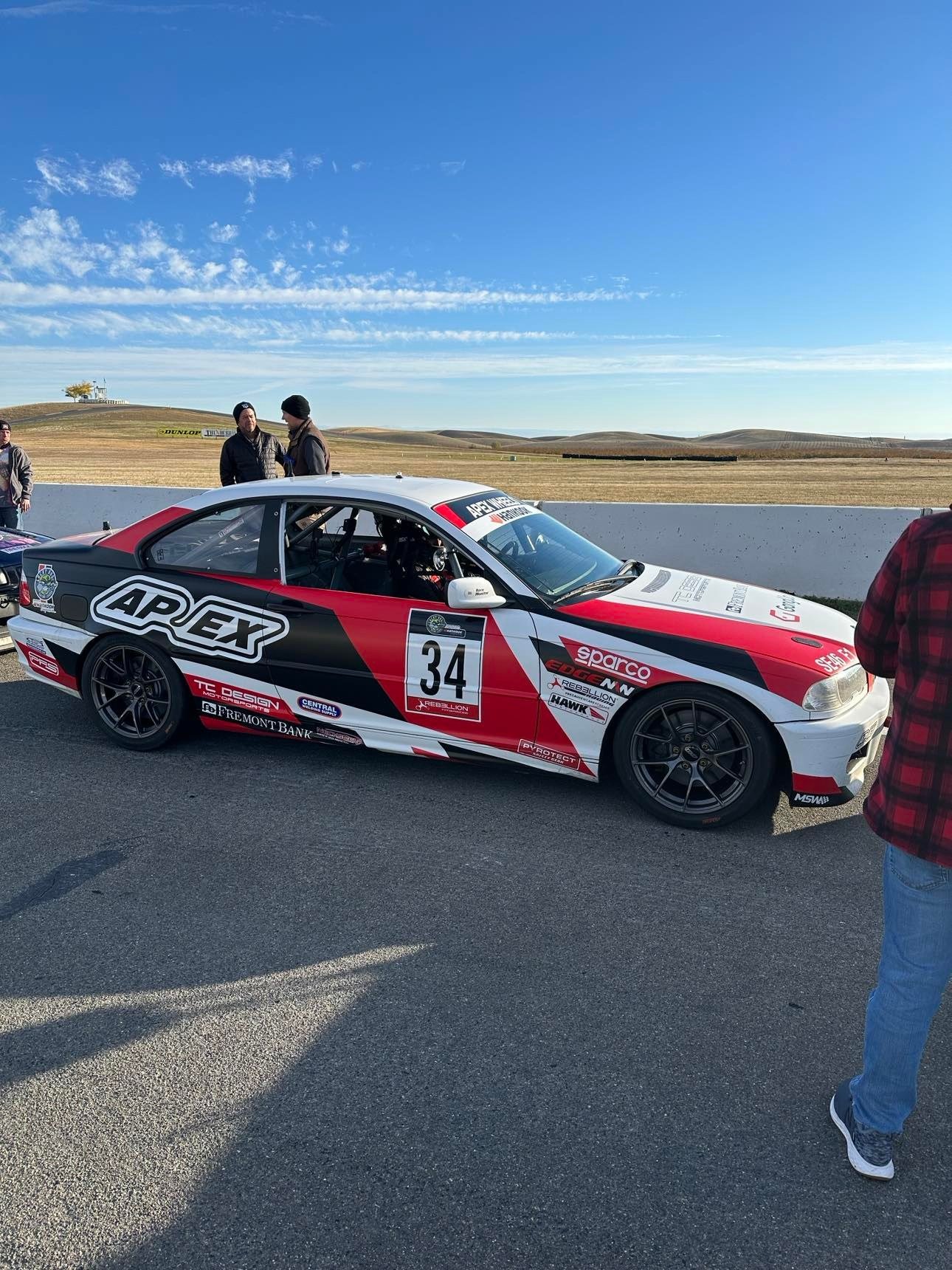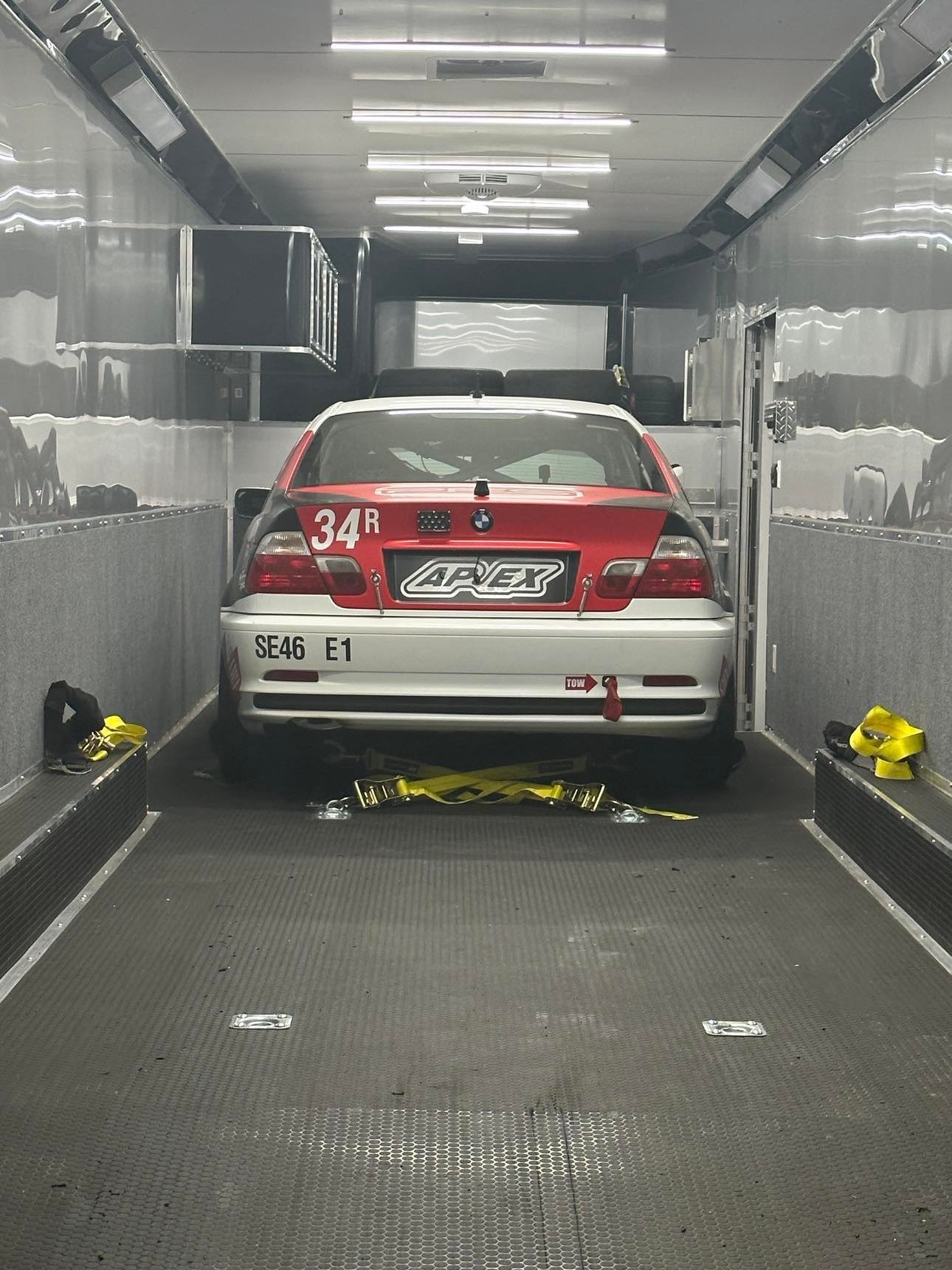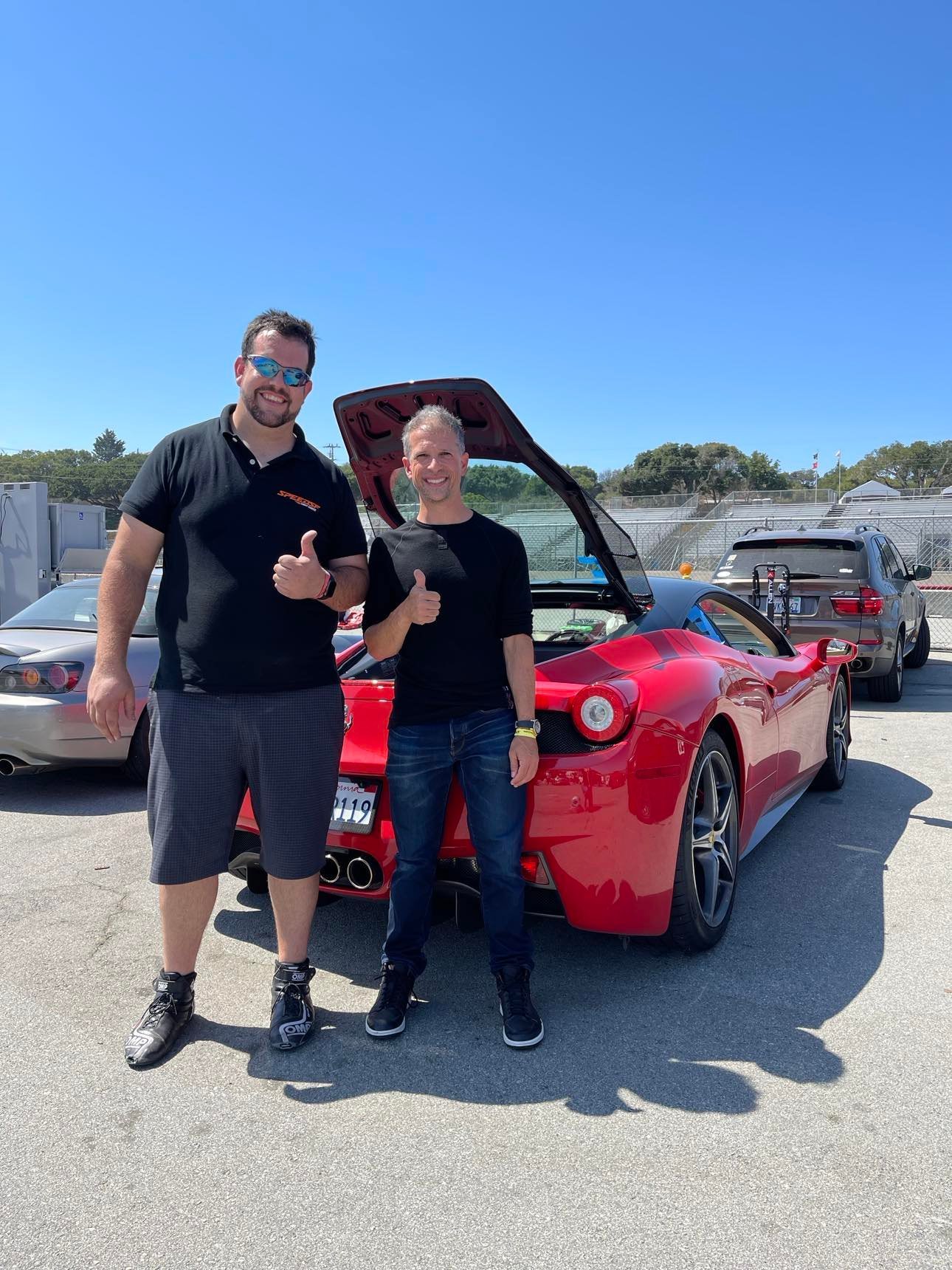Why Trackday Coaching Matters
Although Eric Preciado had experience in a variety of cars in e-sports and some track time in the real world, he sensed he needed some guidance or, at the very least, some structured lessons to help him advance as a driver.
Being a fastidious and goal-oriented person who likes to monitor his progress in everything he does, Eric Preciado figured a coach would help him analyze and understand his driving technique a little better. He hired colleague and local ace Joe McGuigan to guide him along, and as Eric realized, a good coach can offer much more than basic lessons in theory and technique.
Laying a Foundation
Joe’s opinion as a professional instructor was that, as opposed to Eric’s Cayman or another unforgiving car, a Spec E46 would help Eric advance the fastest. Plus, it was a company car, so it was easy for Eric to borrow it for a day.
Spacious, forgiving, torquey, quick, and easy on consumables, it’s fast enough for most drivers and a great way for drivers to learn their craft comfortably. Because of its progressive breakaway, it gives a coach plenty of time to identify a mistake made by their student long before it happens.
With the proper car selected, they started their day at Thunderhill West going through some rudimentary theory. Joe’s basic approach is to help a novice build a foundation of good habits that will keep them safe, that they can continue to build upon, and that help explain the physics at play. With Eric, it began with a detailed explanation of the racing line, including braking and turn-in points.
Though Eric had a basic understanding of these concepts, he had developed some habits in autocrossing that do not transfer well into the world of road racing. “I didn’t recognize it, but I was shocking the car with really rapid steering inputs. This usually works in autocross, but not at higher speeds,” Eric recalled.
Then there were the braking points. Most initiates struggle to realize just how hard and late into the braking zone a well-sorted car can stop. It’s a forceful touch—easy enough to understand given some instruction—but the timing and the release of the pedal take far more sensitivity, and that’s something an experienced, sensitive driver can assist their pupil with.
Eric listened intently and put those pieces of information to good use. With his newfound confidence on the brakes and slightly cleaner lines, Eric set a baseline of 1:31—a respectable time at Thunderhill West and a full two seconds faster than he was able to go on his own previously.
As impressive as that drop in time was for only one session of work, Joe knew that he’d have to encourage Eric to push a little harder in order to find more time. To convince Eric that the car could take much more abuse, Joe took the wheel for two laps and demonstrated how late he could brake, how much entry speed he could carry, and how sane and composed it would be, despite all the additional loading. Even with two heavy occupants, Joe proved this well-sorted Spec E46 could lap Thunderhill West in 1:25.
This demonstration was not given without one firm reminder: this is what the car is capable of when it’s driven properly; going faster isn’t as much about courage as a novice might think. Muscle memory can be acquired from the passenger seat, and when Eric left it to get back behind the wheel, he had a few new things he wanted to try.
Following the First Leap
Now confident the car could brake later and carry much more entry speed than he thought was possible, the coach became vital. Now asking more from the car and making inputs which weren’t all that different from those he made earlier in the morning, the Spec E46 didn’t quite stick where it had before.
Resolving this oversteer issue began with the typical countersteer-pause-recovery process so many of us are familiar with, but need a little fine-tuning to make it second-nature. After a session on the skidpad, Eric felt comfortable catching his little slides. “Not only did I get an idea of what the limits were, but I learned how to deal with going over the limit. Rear end steps out? A nice and controlled throttle application with the appropriate amount of countersteer will solve that,” he noted.
It’s a recognition of the subtler mistakes that a student makes which makes a coach sitting onboard so valuable. Joe, seeing that Eric was lifting off the throttle for an extended period—a normal side effect of carrying more entry speed than is comfortable, and so he had to make a critique.
An example of a tailored to-do list for one of Joe’s clients.
“I could see that his long lift off the throttle was destabilizing the car, so I told Eric to start using a little maintenance throttle in Turn 6 to help settle the rear end,” Joe said. Not only was this to help his student progress safely, but to help Eric understand that a little oversteer is nothing to worry about—it can even be his ally in cornering. Talk about a shift in perspective.
Along with the softer steering inputs, more assertion with the brake inputs, and a careful weight transfer that helped give him confidence in the faster corners, Eric could start to feel comfortable enough to analyze his driving and use a little bit of rear rotation to help him corner faster. Prior to that, he was driving cautiously and dedicating most of his concentration to avoiding an oversteer moment.
To have both peace and presence of mind is worth the cost alone, but it’s hard to brag about those things at a bar with your buddies. Thankfully, Eric had a new stat he could hang his hat on: he managed to get down to a 1:28.2 by the end of his final session—that’s an improvement of nearly five seconds in just four sessions.
Solutions for the Time/Budget-Limited
Not everyone has the flexibility or the budget to arrange for in-person coaching, but those shouldn’t prevent them from getting a qualified professional’s perspective. Fortunately, there are two ways drivers can get some instruction from the comfort of their homes at a time that is convenient for both student and instructor.
“Video reviews are something I enjoy doing as they allow me to give relatively quick and easy to digest notes for a new client to understand, while giving me a sneak preview of their habits—both good and bad—that I can use for our future in-car coaching sessions.
I also do this with some of my regular clients as well, as timing doesn’t always work out for me to do in-car coaching. Obviously, driving a track I am familiar with helps, but I can still provide notes even for a track I haven’t necessarily driven in real life, but I can still give input on basic lines and inputs the driver is doing with the car. However, there is another form of digital coaching that I utilize, which even allows me to do lead follow, and that is sim coaching.
I prefer working with Assetto Corsa as the track and car availability is very vast thanks to an active modding community. The joys of doing sim racing is that I can be live chatting with a client while watching the live feed via Discord or other streaming service. We can even do lead-follow together, practice passing and defending, and walk through setup changes to improve the car that client's driving,” Joe elaborates.
Undebatable Data
For the advanced driver, it’s data review that makes the difference. The difference between an exceptional lap and a good lap is almost imperceptible, even to the trained eye. Studying data, as is possible with the information collected by an AIM SOLO or similar device allows them to get into the nitty gritty. Ideally, they run a demo lap with Joe driving, then overlay the clients lap and work on the low hanging fruit before focusing on those last couple tenths of a second.
This sort of review will help you recognize that, for instance, braking later into a corner followed by a long straight will not always yield the best overall time. Though theory claims that you should prioritize the exit in a corner leading onto a straightaway, the top speeds and delta shown in the data reveal just how much a banzai-braking attempt is actually paying off. Unlearning bad habits is made easier when the student is presented with irrefutable evidence of their detrimental effects.
Experience Reducing Energy Expended
Though it’s mostly changes in technique that aid the novice driver the most, the intermediate and advanced drivers can benefit from a coach’s understanding of a particular car and what it needs in terms of chassis set up.
The E46 was set up for sticky Hoosiers, but because they’d fitted it with milder RS4s that day, Joe made a few tweaks to the MCS 1-way coilovers after his session; softening the bump and rebound to suit the level of grip offered by the RS4s.
Breaking Past Imaginary Barriers
“While I understand the physics and vehicle dynamics behind driving at the limit, I didn’t know them physically. My perception of what the limit was has always been flawed and defined by other imaginary circumstances such as wrecking a car or not being able to afford replacing a bent tie rod.
Coaching allows you to understand where the limits really are, how they feel like, and how to drive near or past them. With Joe, I was put in a position to experience those things safely, which gave me the confidence to push past my own mental blocks holding me back from becoming a better driver,” said Eric.
While some might think the extra expense is unnecessary, nothing—not better parts, not better weather, not even weight reduction—will make as big a difference to lap time in one day of driving. Frankly, the pride that comes in figuring things out for yourself is not worth the time and expense—and those discoveries are harder to make as the driving level improves and glaring mistakes become subtle imperfections. Bank on a coach with a good reputation and your bank account will thank you for it.
For more on Joe’s coaching services, visit Average Joe’s Coaching.

